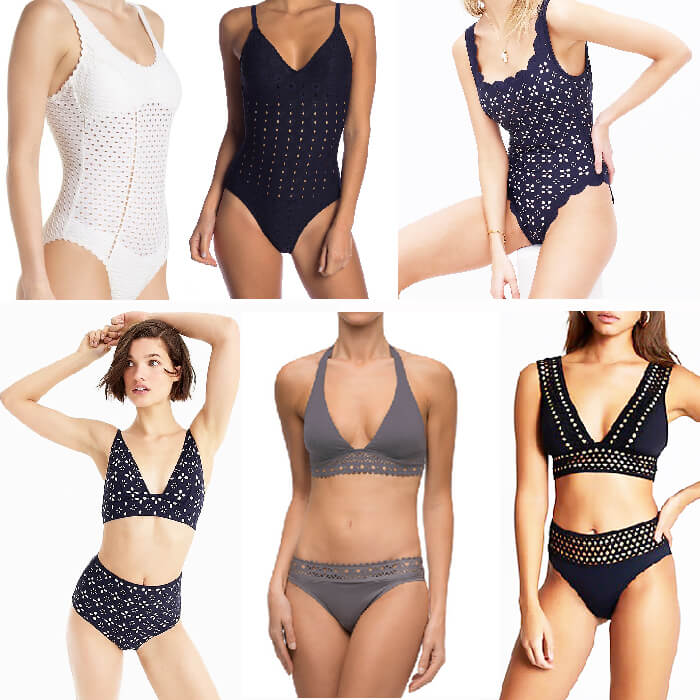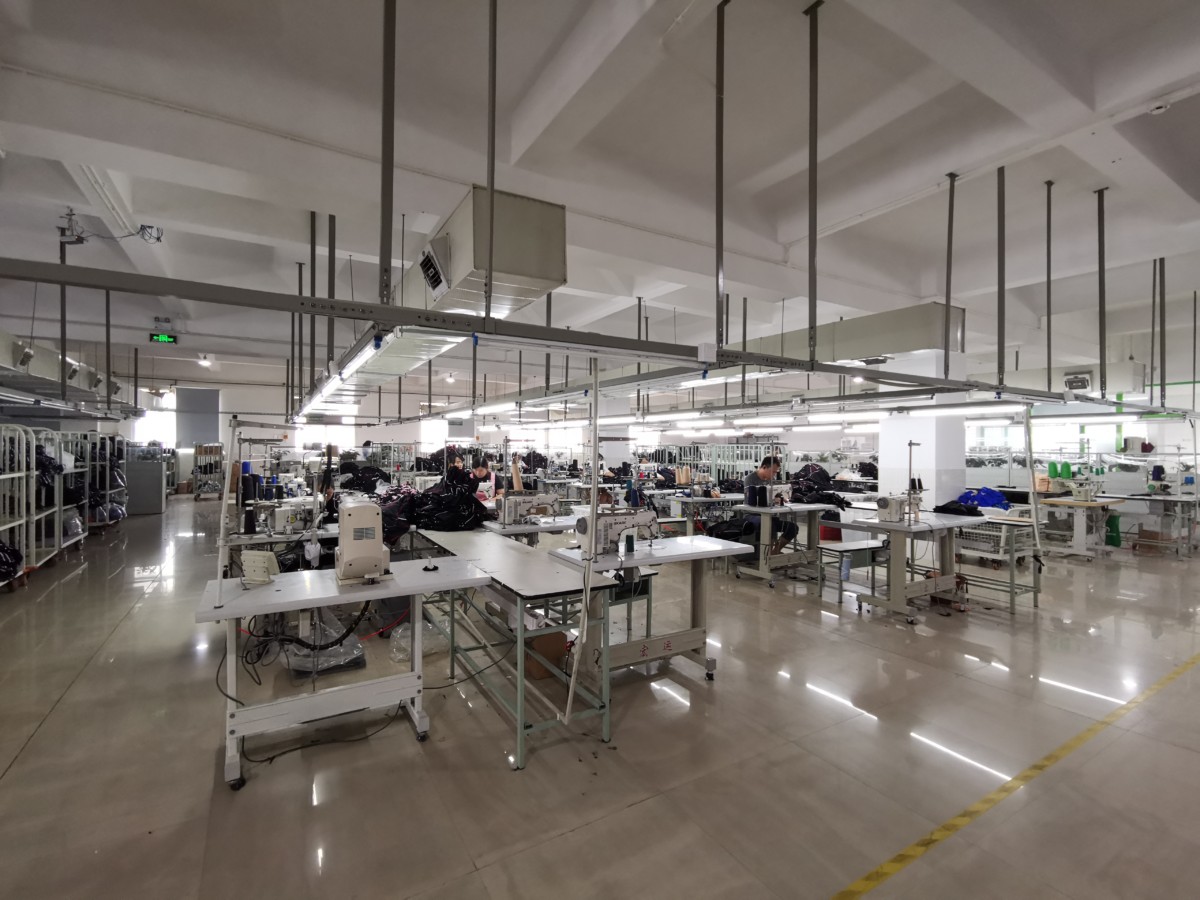Content Menu
● Introduction
● Understanding Your Needs
>> Defining Your Brand Identity and Target Market
>> Determining the Types of Swimwear Products Needed
>> Setting a Budget for Production
● Researching Potential Manufacturers
>> Identifying Reputable Swimwear Manufacturers
>> Evaluating Manufacturer Capabilities
● Initial Communication
>> Preparing an Inquiry or Request for Proposal (RFP)
>> Key Questions to Ask Potential Manufacturers
>> Assessing Responsiveness and Communication Style
● Sampling Process
>> Requesting Samples of Existing Products
>> Creating Custom Samples Based on Your Designs
>> Evaluating Sample Quality and Fit
>> Making Necessary Adjustments Before Final Approval
● Placing an Order
>> Finalizing Designs and Specifications
>> Understanding Pricing Structures and Payment Terms
>> Drafting and Signing a Contract
● Production Phase
>> Monitoring Production Progress
>> Quality Assurance Checks During Manufacturing
>> Addressing Any Issues That Arise Promptly
● Shipping and Logistics
>> Understanding Shipping Options and Costs
>> Customs Clearance and Import Regulations
>> Planning for Inventory Management Upon Arrival
● Post-Production Support
>> Evaluating the Final Products Upon Receipt
>> Addressing Any Discrepancies or Quality Issues
>> Building a Long-Term Relationship with the Manufacturer for Future Orders
● Conclusion
● Frequently Asked Questions
>> 1. What should I look for in a wholesale swimwear manufacturer?
>> 2. How do I determine my budget for swimwear production?
>> 3. What is the typical lead time for swimwear production?
>> 4. Can I customize my swimwear designs?
>> 5. What should I do if I receive defective products?
Introduction
The swimwear industry is a vibrant and competitive market, characterized by a diverse range of styles, materials, and consumer preferences. As a brand owner or retailer, partnering with the right wholesale swimwear manufacturers is crucial for success. This article aims to provide a comprehensive overview of the process involved in working with these manufacturers, from understanding your needs to post-production support. By following this guide, you can ensure a smooth collaboration that meets your business goals.

Understanding Your Needs
Before reaching out to wholesale swimwear manufacturers, it's essential to have a clear understanding of your brand identity and target market. This foundational step will guide your decisions throughout the manufacturing process.
Defining Your Brand Identity and Target Market
Your brand identity encompasses your values, mission, and the unique selling propositions that differentiate you from competitors. Consider the following questions:
- What message do you want your swimwear line to convey?
- Who is your target audience? (e.g., age, gender, lifestyle)
- What are the current trends in the swimwear market?
Understanding your target market will help you tailor your products to meet their preferences, ensuring a better fit for your brand.
Determining the Types of Swimwear Products Needed
Next, identify the specific types of swimwear you want to produce. This could include:
- Bikinis
- One-piece swimsuits
- Swim trunks
- Rash guards
Consider the styles, sizes, and materials that will appeal to your audience. For instance, eco-friendly materials are increasingly popular among environmentally conscious consumers.

Setting a Budget for Production
Establishing a budget is crucial for managing costs effectively. Consider all potential expenses, including:
- Manufacturing costs
- Shipping and logistics
- Marketing and branding
Having a clear budget will help you communicate effectively with wholesale swimwear manufacturers and avoid unexpected expenses.
Researching Potential Manufacturers
Once you have a clear understanding of your needs, the next step is to research potential wholesale swimwear manufacturers.
Identifying Reputable Swimwear Manufacturers
Start by compiling a list of potential manufacturers. You can find them through:
- Online directories (e.g., Alibaba, ThomasNet)
- Trade shows and industry events
- Recommendations from industry contacts
Evaluating Manufacturer Capabilities
Not all manufacturers are created equal. Evaluate their capabilities by considering:
- Production Capacity: Can they meet your order quantities?
- Quality Control Processes: What measures do they have in place to ensure product quality?
- Compliance with International Standards: Are they certified for safety and quality?
This evaluation will help you narrow down your options to manufacturers that align with your business needs.
Initial Communication
Once you have identified potential manufacturers, initiate communication to gauge their suitability.
Preparing an Inquiry or Request for Proposal (RFP)
Craft a clear and concise inquiry or RFP that outlines your requirements. Include details such as:
- Product specifications
- Order quantities
- Desired timelines
Key Questions to Ask Potential Manufacturers
During your initial communication, ask the following questions:
- What are your minimum order quantities (MOQs)?
- What are your lead times for production?
- Do you offer customization options?
These questions will help you assess whether the manufacturer can meet your needs.
Assessing Responsiveness and Communication Style
Pay attention to how quickly and effectively manufacturers respond to your inquiries. Good communication is vital for a successful partnership, so choose a manufacturer that is responsive and professional.
Sampling Process
After narrowing down your options, the next step is the sampling process.

Requesting Samples of Existing Products
Before committing to a manufacturer, request samples of their existing products. This will give you a sense of their quality and craftsmanship.
Creating Custom Samples Based on Your Designs
If you have specific designs in mind, work with the manufacturer to create custom samples. This step is crucial for ensuring that the final product aligns with your vision.
Evaluating Sample Quality and Fit
Once you receive the samples, evaluate their quality and fit. Consider factors such as:
- Material feel and durability
- Stitching and finishing
- Overall design and aesthetics
Making Necessary Adjustments Before Final Approval
If the samples do not meet your expectations, communicate your feedback to the manufacturer. They should be willing to make adjustments to ensure the final product aligns with your standards.
Placing an Order
Once you are satisfied with the samples, it's time to place your order.
Finalizing Designs and Specifications
Confirm the final designs and specifications with the manufacturer. Ensure that all details are documented to avoid misunderstandings later.
Understanding Pricing Structures and Payment Terms
Discuss pricing structures and payment terms with the manufacturer. Be clear about:
- Total costs
- Payment schedules
- Any additional fees (e.g., for customization)
Drafting and Signing a Contract
A contract is essential for protecting both parties. Ensure that the contract includes:
- Delivery timelines
- Penalties for delays
- Quality assurance measures
Production Phase
With the order placed, the production phase begins.
Monitoring Production Progress
Stay in regular contact with the manufacturer to monitor production progress. This will help you address any issues that arise promptly.

Quality Assurance Checks During Manufacturing
Implement quality assurance checks during the manufacturing process. This could involve:
- On-site inspections
- Regular updates from the manufacturer

Addressing Any Issues That Arise Promptly
If you encounter any issues during production, address them immediately. Effective communication is key to resolving problems quickly.
Shipping and Logistics
Once production is complete, it's time to focus on shipping and logistics.
Understanding Shipping Options and Costs
Discuss shipping options with the manufacturer. Consider factors such as:
- Shipping methods (e.g., air, sea)
- Estimated shipping times
- Costs associated with each option
Customs Clearance and Import Regulations
Be aware of customs clearance and import regulations in your country. Ensure that all necessary documentation is prepared to avoid delays.
Planning for Inventory Management Upon Arrival
Once your swimwear arrives, have a plan in place for inventory management. This includes:
- Storage solutions
- Inventory tracking systems
- Distribution strategies
Post-Production Support
After receiving your order, the relationship with your wholesale swimwear manufacturer doesn't end.
Evaluating the Final Products Upon Receipt
Inspect the final products upon receipt to ensure they meet your quality standards. Check for any discrepancies or defects.
Addressing Any Discrepancies or Quality Issues
If you find any issues, communicate them to the manufacturer promptly. Discuss potential solutions, such as replacements or refunds.
Building a Long-Term Relationship with the Manufacturer for Future Orders
Consider establishing a long-term relationship with your manufacturer. A strong partnership can lead to better pricing, priority service, and improved collaboration on future projects.
Conclusion
Working with wholesale swimwear manufacturers can be a rewarding experience when approached with careful planning and communication. By following the outlined process, you can ensure a successful partnership that meets your business needs. Remember, investing time in selecting the right manufacturer is crucial for the success of your swimwear brand.
Frequently Asked Questions
1. What should I look for in a wholesale swimwear manufacturer?
- Look for quality, production capacity, compliance with standards, and good communication.
2. How do I determine my budget for swimwear production?
- Consider manufacturing costs, shipping, and marketing expenses when setting your budget.
3. What is the typical lead time for swimwear production?
- Lead times can vary, but they typically range from 4 to 12 weeks depending on the manufacturer and order size.
4. Can I customize my swimwear designs?
- Most wholesale swimwear manufacturers offer customization options, but it's essential to discuss this during initial communications.
5. What should I do if I receive defective products?
- Inspect the products upon receipt and communicate any issues to the manufacturer for resolution.
By following this guide, you can navigate the complexities of working with wholesale swimwear manufacturers and build a successful swimwear brand.




































































